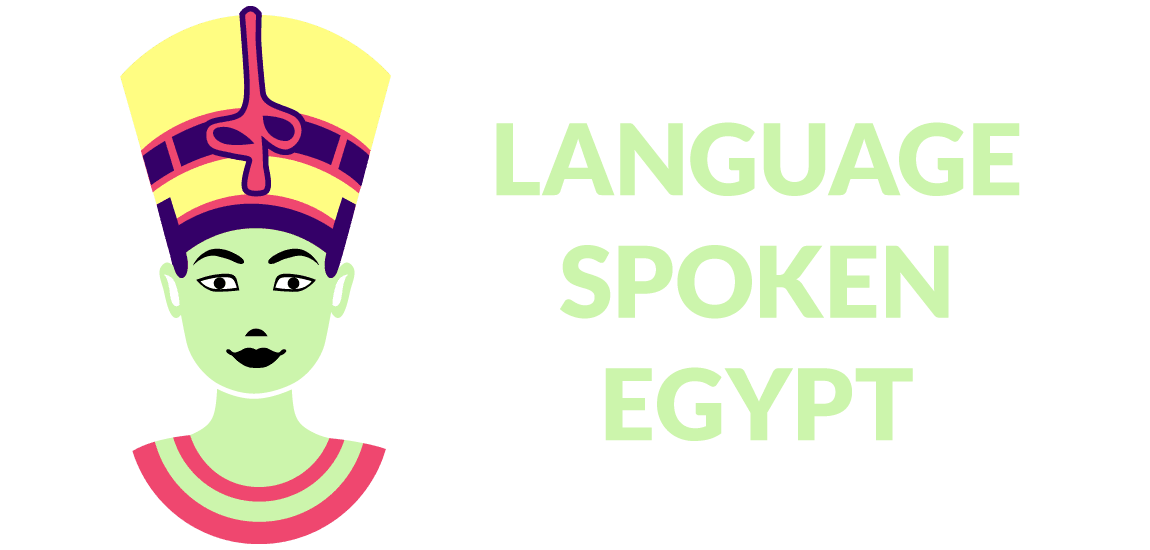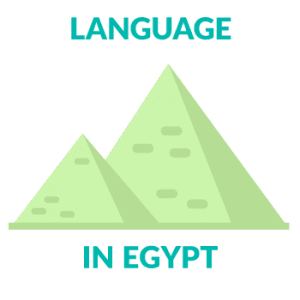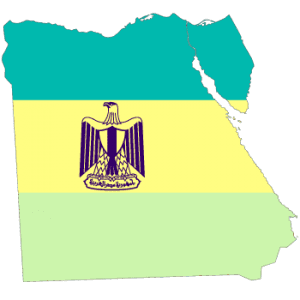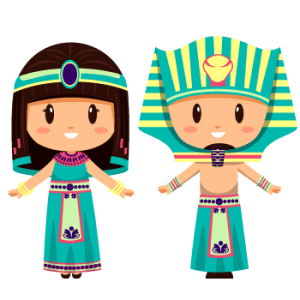
5 Fascinating Facts About the Language Spoken in Egypt
Visiting Egypt
Suppose you plan on visiting Egypt or just want to brush up on your knowledge about its culture. In that case, you might be interested in knowing what official language and common language is spoken in Middle Egyptian. Though this may seem obvious, it’s not as simple!
For example, the official language of Egypt is Standard Arabic from the 17th century, the eighth century to the 20th century, and the 21st century. Yet, the Egyptian language is closely related to the language of their ancestors, like Nubian languages, African languages, Afro-Asiatic languages, Arabic languages, ancient languages, french languages, and Greek languages.
Have you ever heard someone say Shukran?
The word shukran means thank you in Egyptian Arabic, so it is no surprise that many Egyptians use it to express gratitude. When saying thanks in the Egyptian language will often respond with de nada or just an appreciative nod of the head. While there are regional variations, these two phrases are probably among the most commonly used by Egyptians daily.
They’re so common that even non-Arabic speakers have adopted them into their vocabulary. For example, when someone says shukran to me while I’m traveling abroad and I don’t understand what they mean, I might ask if they said thank you. And if they say yes, then I know exactly how to respond! Few other immigrant languages, like English, are used as popular and literary languages. These are also considered reliable language translation services.

Arabic is an ancient and liturgical language.
The modern-day native language known as Arabic is a descendant of ancient variants of Semitic languages, like Akkadian and Aramaic, and is characterized by a rich Arabic phonology. It’s believed that Arabic speakers settled in Northwest Africa sometime between 2000 B.C. and 1000 B.C., mixing with local Berber populations and becoming what we now call Arab culture. Today, there are more than 200 million native Arabic speakers worldwide—the largest concentration of which can be found in Egypt. If you travel to Cairo or Alexandria, you might notice locals conversing in Arabic and English. However, middle Egyptian speaks English, and they prefer to use their native tongue when communicating with friends and family.

Arabic borrowed from another national language
In addition to its own vocabulary, Arabic has also borrowed words from other languages. In fact, some of these words are very well known. For example, many English speakers know at least one word of Arabic origin: alcohol.
How do you say alcohol in Arabic? Al-kohl is an Arabic word that comes from a name for a type of antimony used as eye makeup by ancient Egyptians. Alcohol is actually a transliteration of al-kohl into Latin characters. Many other words came into English through Arabic, including algebra (from al-jabr), candy (from qandi), coffee (from qahwah) and admiral (from amir al-bahr).
Egypt’s official language and other foreign languages
The official language of Egypt is Modern Standard Arabic, but it is usually not spoken as a first language. Instead, Egyptians speak one of many dialects of colloquial Arabic and local languages such as Berber and Coptic. In addition to Arabic, English is taught in schools from an early age, although fluency is limited outside urban areas.
Egypt’s official language, Egyptian varieties, exhibits a complex phonology featuring both consonantal and vowel sounds, with Demotic phonology influencing its development. Independent pronouns, interrogative pronouns, and demonstrative pronouns play crucial roles in Egyptian grammar, reflecting the language’s rich linguistic structure. In internal dialects of Eastern Egypt and Upper Egypt, distinct features such as ejective consonants and actual pronunciations vary. While Egyptian script dates back to the 14th century, foreign languages like North Levantine may have influenced its evolution, showcasing the dynamic linguistic landscape of the region.
It is influenced by its rich linguistic history spanning from Ancient Egypt to the present day, encompasses various internal dialects and major dialects, characterized by unique phonological features such as Demotic consonants, ejective consonants, and glottal consonants found in religious texts, hieratic texts, and secular literature. Throughout the Coptic period and medieval periods, the Egyptian script evolved, leading to the development of the Coptic alphabet and the emergence of different Egyptian varieties.
While Ancient Egyptian remains the best-documented variety, its actual pronunciations versus artificial pronunciations continue to be a subject of study, with scholars examining aspects such as stressed syllables, Demotic phonology, and consonantal phonology. Even into the mid-20th century, the language landscape in Egypt reflects a blend of ancient and modern influences, encompassing definite articles, personal pronouns, and Egyptian vowels.
In the classical stage of Egyptian language development, the Greek-based alphabet incorporated phonemic vowels, contributing to the emergence of major dialects and internal variations in stressed syllables within Egyptian varieties spoken across different geographical locations. The Coptic alphabet, derived from earlier stages and rooted in the Coptic language, became influential in religious texts and secular literature, showcasing the evolution of Egyptian phrases and linguistic nuances.
The intricate interplay of the Coptic language with classical dialects illustrates the dynamic linguistic landscape, reflecting the rich heritage of Egyptian texts and the diverse cultural tapestry of the region. The Egyptian script, including hieroglyphs, maintained a connection with daily language use, reflecting the rich tapestry of Eastern Egyptian and the Egyptian vernacular, all rooted in the intricate interplay of classical dialects and the diverse range of Egyptian texts.
Some languages are commonly used by Egyptian citizens that aren’t technically considered official languages: Egyptian Sign Language (ESL) is used by those who are deaf or hard-of-hearing; French is used among educated people who studied abroad, and Italian was once common among elite families but has since declined in popularity. You must read this blog post to know What language is spoken in Egypt.


Various Dialects And Scripts Of Egypt
The Greek alphabet and hieratic and hieroglyphic scripts played a significant role in shaping the linguistic landscape near the Sudanese border, where Arabic dialects and spoken languages flourished alongside the intricate beauty of Egyptian hieroglyphs. Within this mosaic of cultural expression, demotic scripts emerged as a bridge connecting literary texts and demotic texts, each intricately related to various dialects and scripts of Egypt.
During the Hellenistic, medieval, and modern periods in the Egyptian linguistic evolution, internal dialects exhibited variations in emphatic and sonorant consonants. Demotic consonants, ejective consonants, and glottal consonants played distinctive roles. The productive forms found in hieratic texts during the Coptic period were closely related to various dialects and scripts of Egypt, reflecting the complexity of linguistic shifts from earlier forms to actual pronunciations.
Various dialects and scripts of Egypt have evolved, with Semitic languages influencing major dialects alongside the use of the Coptic alphabet in demotic texts. From the earlier stages of Ancient Egypt to the late stages in the mid-20th century, various dialects and scripts emerged, including classical dialects and hieratic texts. In Eastern Egypt, particularly during the Coptic period and medieval periods, distinct linguistic features such as ejective and glottal consonants were prominent. The Bohairic Coptic, known as the best-documented variety, was widely used in literary documents and for religious purposes. These dialects and scripts showcase diverse linguistic characteristics, from artificial pronunciations to stressed syllables and definite articles, reflecting the rich linguistic history of Egypt and its various regional and historical influences.
With its singular forms and verbal roots, the Coptic dialect echoed the Egyptian stage, connecting the Middle East’s linguistic heritage. Notably, within the larger roots and posttonic syllables, the forms of definite articles in Coptic revealed the nuanced interplay of linguistic elements on the third-last syllable, preserving the essence of ancient Egyptian vowels in the broader tapestry of language evolution.
The largest body of literature written during the Hellenistic and medieval periods in Various Dialects And Scripts Of Egypt includes hieroglyphic inscriptions, hieratic scripts, and literary texts, showcasing the intricate interplay between the Egyptian vernacular and the Greek alphabet. This comprehensive body encompasses religious texts, secular literature, and legal documents, highlighting the evolution of spoken languages throughout the classical stage.
In the mid-20th century, Coptic Christians, influenced by the late stages of the Egyptian linguistic landscape, preserved actual forms of artificial pronunciations, offering insights into the rich cultural tapestry of Sudanese Arabic and the region’s diverse heritage.
Egypt is a melting pot of cultures, religions, and foreign languages.
It is home to at least 42 distinct indigenous and minority languages, and English is commonly used as a second language. Despite that cultural diversity, Modern Standard Arabic (MSA) is Egypt’s national and official language. There are several theories about where MSA originated—including its roots within many ancient languages like Coptic or Nubian—but its relatively fixed form was standardized during the 19th century.
In the study of Egyptological pronunciation, the non-final position of emphatic consonants plays a crucial role in understanding the consonantal phonology of the best-documented variety of Egyptian languages, revealing the etymological roots embedded in the adjectival phrases used to describe the isolated vernacular spoken in the diverse contexts of Egypt, including within the Coptic Catholic Churches.
In the geographical location of Egypt, a melting pot of cultures, religions, and foreign languages, the decipherment of hieroglyphs on the Rosetta Stone in the 16th century marked a pivotal moment, contributing to the understanding of the largest body of literature written, including legal documents and literary texts. The Hellenistic period saw the emergence of Coptic Christians and the Coptic Church, with literary documents reflecting the intricate interplay of Demotic phonology and the stressed positions, as well as the unstressed positions of adjectives in phrases, shedding light on the rich linguistic heritage of Egypt.
Today, it is an important communication tool between speakers of different dialects across various regions throughout North Africa and Western Asia. For example, many dialects across Iraq and Saudi Arabia still use MSA to communicate, despite their sometimes vast differences in pronunciation or vocabulary usage, especially among educated persons, Egyptian dialect, colloquial dialect, and Nubian people. You will also see this spicy touch in the modern form of writing.
The evolution of writing systems across centuries provides a fascinating glimpse into cultural and technological shifts. Arabic script, which originated in the 4th century and became widely used by the 7th century, stands as a testament to the linguistic and cultural expansion that accompanied the rise of Islam. By the 19th century, this script had not only solidified its presence across the Middle East and North Africa but also influenced various aspects of art, literature, and science in the Islamic world. The journey from its early adoption to its 19th-century prominence underscores the adaptability and enduring legacy of the Arabic script in preserving and disseminating knowledge across a vast geographical expanse.
Frequently Asked Questions
What is the official language of Egypt?
The official language of Egypt is Modern Standard Arabic. It is used in official documents, education, and media.
What dialect of Arabic is predominantly spoken in Egypt?
The predominant dialect spoken in Egypt is Egyptian Arabic, also known as Masri or Masry. This dialect is used in everyday communication among Egyptians.
Are there any other languages spoken in Egypt besides Arabic?
Yes, there are other languages spoken in Egypt. These include Coptic, used in the liturgy of the Coptic Orthodox Church, and Nubian languages spoken by communities in the south of Egypt. Additionally, some people speak English and French, particularly in business and education.
How has the Coptic language influenced modern Egyptian culture?
The Coptic language, although now primarily a liturgical language, has left a significant impact on Egyptian culture and identity. It represents a direct link to Egypt’s pre-Islamic past and continues to be used in the religious practices of Egypt’s Coptic Christian community.
How widely understood is Egyptian Arabic outside of Egypt?
Egyptian Arabic is widely understood across the Arab world, primarily because Egypt has a prominent film, television, and media industry. This widespread exposure has made the Egyptian dialect one of the most familiar and comprehensible dialects in the Arabic-speaking world.


Sorry, the comment form is closed at this time.